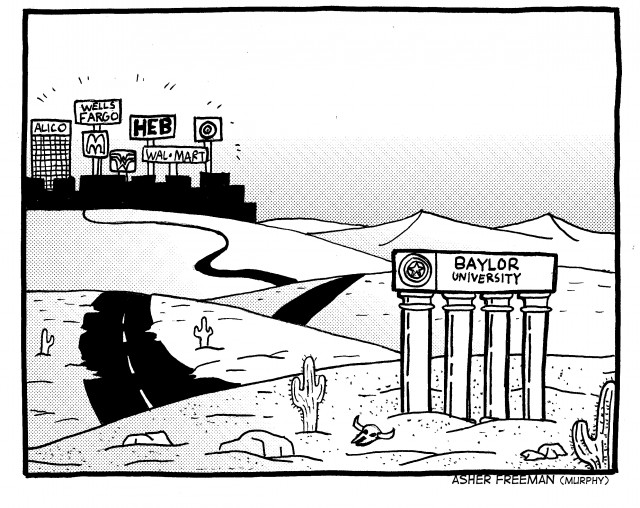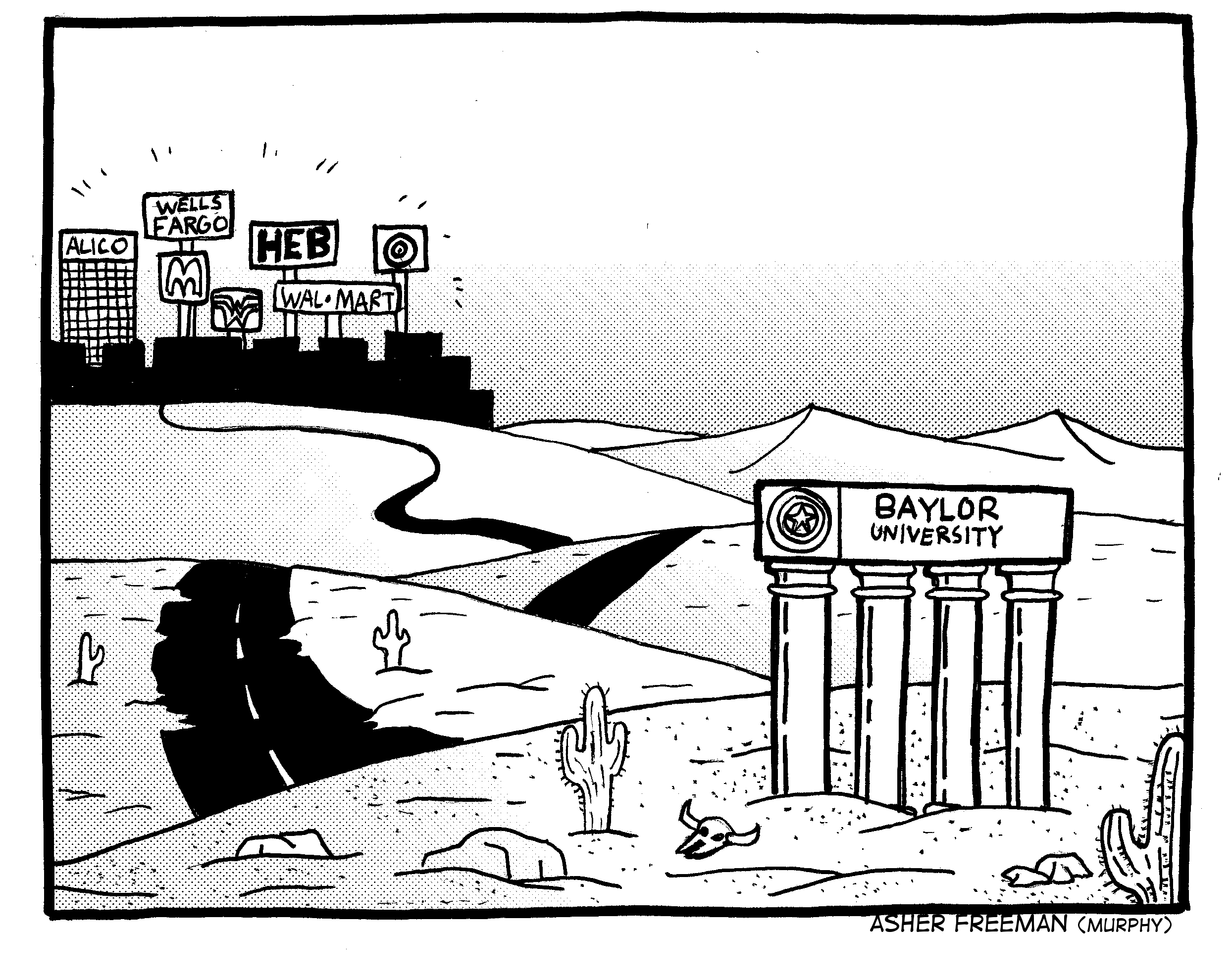 With its new expansion, Baylor is becoming more residential. Most freshmen are already required to live on campus. According to Baylor’s Pro Futuris, Baylor wants to add to the on-campus experience.
With its new expansion, Baylor is becoming more residential. Most freshmen are already required to live on campus. According to Baylor’s Pro Futuris, Baylor wants to add to the on-campus experience.
In order to do this, one of the aims is to “continue to increase the percentage of undergraduate students who live on campus and who participate in living-learning and residential college communities.”
Compared to schools like Rice University, which is close to Rice Village; Texas A&M, which has the majority of College Station; and the University of Texas at Austin which has all of downtown Austin students can walk around in, Baylor has very limited choices for food, groceries and entertainment within walking distance.
There are the cafeterias and Baylor restaurants which have limited hours, in addition to nearby IHOP, Subway, Pizza Hut and Denny’s. But with the imminent closing of the H-E-B at 12th Street and Speight Avenue, students have nowhere to buy groceries unless you count the convenience store in the Exxon station in front of Penland Hall.
And there is only one choice for shopping on campus, Harts ‘N Crafts, geared mostly toward girls.
Many students who live on or near campus might not have cars because they don’t have to commute, but it’s getting harder for students to go off-campus for food and groceries.
Many students rely on the H-E-B on 12th and Speight Avenue for their groceries. Additionally, many members of the Waco community rely on that H-E-B for their groceries because the other stores are much farther away.
After H-E-B closes, there will be nowhere for carless students to get groceries. As it is, there are few restaurants around Baylor that students can safely get to. There is a large variety of restaurants across the interstate, but there is no way for students to get there without crossing the interstate, and it’s a long way to walk, let us tell you.
Baylor wants more students to live on campus, but in order to do so, the surrounding community must be able to sustain carless students who need easy access to essential services. No one can eat at Collins all the time.
If there isn’t shopping and entertainment close to campus, what incentives are there for students to live there in the first place? For one thing, off-campus housing rates may be cheaper and offer convenient access to these essential services, plus there are no visiting hours or pet restrictions.
If Baylor wants to attract students to living on campus, there must be incentives — but we recognize these efforts may only come about in cooperation with the surrounding community.
Some shopping and a grocery store nearby would be a great way to start.






